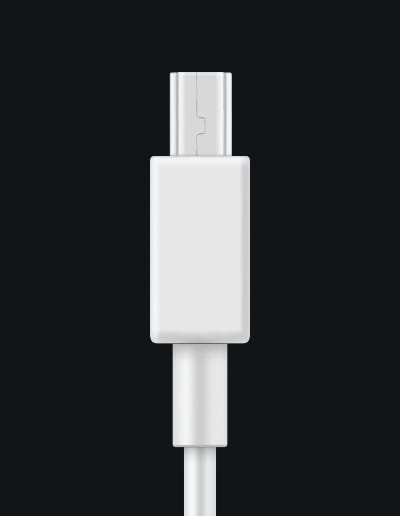What is USB B?

— or —

USB Type-B was introduced alongside USB Type-A as part of the initial Universal Serial Bus (USB) standard in January 1996. The consortium responsible for this standard consisted of industry giants like Intel, Compaq, Microsoft, and IBM. USB Type-B was designed to work in conjunction with USB Type-A to create a standardized, bidirectional link between host devices and peripherals.
The primary reason for the creation of USB Type-B was to establish a standardized yet distinct connector for peripheral devices, setting it apart from the USB Type-A connectors commonly found on host devices like computers. The idea was to avoid confusion and potential mishandling that could arise if both the host and peripheral devices used the same Type-A connectors.
USB Type-B was engineered for durability and a secure fit, making it ideal for applications that require a stable connection. Its square shape and robust construction help to ensure that the cable can only be plugged in the correct way, reducing the risk of damage to the port or the device.
USB Type-B has been most commonly used in scenarios that require a strong and stable connection between a device and its peripheral. Some of the primary applications include:
Printers and Scanners: These are perhaps the most common devices that employ USB Type-B connectors, due to the need for a stable data transfer.
Musical Equipment: Devices like synthesizers, mixers, and MIDI controllers often use USB Type-B for a robust connection.
External Hard Drives: Some models opt for a Type-B connection due to its secure fit.
Industrial Equipment: In settings that demand secure and stable connections, like factories or medical labs, USB Type-B is often the connector of choice.
Networking Hardware: Some network switches and routers feature a USB Type-B port for management and setup.
Although newer standards like USB Type-C are becoming more prevalent, USB Type-B continues to hold its ground in specific applications that require secure and durable connections. It remains popular in the realms of office equipment and musical hardware, where its unique form factor and robust construction are advantageous.
In terms of future relevance, while USB Type-B is gradually becoming less common in consumer electronics, its specialized applications ensure that it will continue to be used for years to come. The backward compatibility with new USB standards also helps in prolonging its life, making USB Type-B a resilient and enduring piece of technology.
In summary, USB Type-B may not be as universally recognized as its Type-A counterpart, but its specialized features and applications make it an indispensable part of the connectivity landscape.
Same day dispatch when you order before 2:00 pm.
We back our product with a massive 24 month warranty.
Got a question? Chat, email or talk to our super friendly support team.